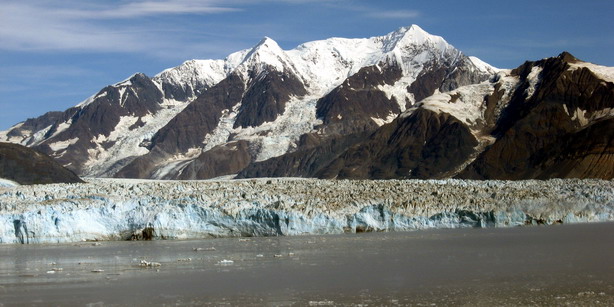September 14 – From Donna: Thursday we awoke at 6:30am and found the seaport of
We were very impressed with
The structures were new, clean, brightly painted, and all decked out like a
We walked around, up one street and down the other, enjoying the array of local crafts and art, though we sneered at the interminable collection of jewelry shops. It seems that every port town is set up to lure in shoppers to buy diamonds, tanzanite, jade, emeralds, gold, watches, and other expensive goods. A local explained that most of them are owned by the cruise lines. “If they don’t get you to buy on board, then they get you to buy on shore,” he said.
Diane and I agreed that it was better to spend money in shops owned by the locals and to buy their handmade goods. After all, if we’re visiting their towns, we should contribute to their livelihood.
We stopped in one taxidermy shop where the proprietor was grizzled and friendly, but he appeared to have been quite handsome in his youth. Behind his counter, he had some artwork done by his grandkids. “My own kids don’t like me,” he said, “but the grandkids think I’m wonderful. My wife and I really like being grandparents.”
His shop was jammed with all kinds of leather, furs and skins – all beautiful pieces made into coats, collars, gloves, shawls, jackets, hats, scarves and anything else to ward off an Alaska winter. He also had collections of animal skulls – wolves, tortoises, beavers, wolverines, coyotes, and other animals found in the woods. “You need fur to stay warm here,” he said. “I don’t understand those places where they don’t like you to wear fur. Up here, they think you’re nuts if you don’t use it.”
In another shop, the owner sold beautiful arts and crafts made by local people. I picked up a pretty piece made from weathered beach glass and armature wire. “These are made by two sisters earning their way through dental school,” the woman said. “Their parents said that if they wanted to get eight years of college, they’d better start wrapping glass and selling it. Both of them are great kids. One of them is
She had another story for Diane, who picked out some brushes made from animal fur. “These are made by identical twin brothers,” the woman said. “They’re potters by trade, but they make their own glazing brushes. After a while, they started selling the brushes because people liked them so much.”
That’s the reason I prefer spending money on local stuff. The things in a jewelry store can be found anywhere. But you can help two girls in dental school only by picking up their handmade art.
We hadn’t seen much in the way of exotic wildlife, so we asked the shop owner in
So we headed in the direction she pointed us, arriving at a short bridge spanning the creek. It was incredible to see the water alive with fish leaping here and there. The creek was teeming with salmon, all crowded together, aiming in the same direction – upstream. Moving only a few inches at a time, they swam against the current to reach their spawning grounds, where they would lay and fertilize eggs before dying off. Three years ago, these same fish had hatched and moved down toward the sea, where they matured and grew into adulthood. Now they were returning to the place where they were born, ensuring that there would be a next generation to do the same thing.
We followed up the creek along a wooden sidewalk elevated on the steep banks. It was lined on both sides with old wooden buildings transformed for commercial use – mostly shops and museums. The most notable was Dolly’s House, a former bordello once owned by a young woman who earned her living by pleasing the old gold prospectors from a century ago. Her place was not illegal, as any place with only one or two women living together was not considered a bordello. So many houses of prostitution were set up by these solitary ladies. Dolly herself ran away from home at an early age to escape abuse. At 18, she figured out that she could make a better living in prostitution than by waiting tables. Her home proved to be one of the most popular in town.
Our stay in












1 comment:
Thanks for writing this.
Post a Comment